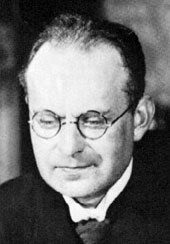Aron Nimzowitsch facts for kids
Quick facts for kids
Aron Nimzowitsch
|
|
|---|---|
 |
|
| Born | 7 November 1886 Riga, Governorate of Livonia, Russian Empire
|
| Died | 16 March 1935 (aged 48) Copenhagen, Denmark
|
| Citizenship | Denmark (1922–1935) Stateless (1917–1922) Russian Empire (until 1917) |
| Occupation | Chess player |
|
Notable work
|
My System |
Aron Nimzowitsch (born November 7, 1886 – died March 16, 1935) was a famous chess player and writer. He was born in Latvia but later became a Danish citizen. In the late 1920s, Nimzowitsch was one of the best chess players in the world.
He was a leader of the hypermodern chess movement. This new way of thinking about chess changed how many players approached the game. Nimzowitsch wrote a very important book called My System (published between 1925 and 1927). Another key book, Chess Praxis, greatly influenced a young Tigran Petrosian, who later became a World Champion.
Contents
Early Life and Moving to Denmark
Aron Nimzowitsch was born in Riga, a city that was part of the Russian Empire at the time. He came from a wealthy family. His father, Shaya Abramovich Nimzowitsch, taught him how to play chess.
In 1904, Nimzowitsch traveled to Berlin to study philosophy. However, he soon decided to focus on chess instead. That same year, he started his career as a professional chess player. He won his first international tournament in Munich in 1906. He also tied for first place with Alexander Alekhine in a big Russian tournament in 1913/1914.
During the Russian Revolution in 1917, Nimzowitsch was in a war zone. He managed to avoid being forced into the army by pretending to be ill. He then moved to Berlin. Later, in 1922, he moved to Copenhagen, Denmark. He lived there for the rest of his life. In Denmark, he won the Nordic Chess Championship twice, in 1924 and 1934. He became a Danish citizen and lived in Denmark until he passed away in 1935.
Nimzowitsch's Chess Career
Aron Nimzowitsch was at his best in the late 1920s and early 1930s. During this time, he was considered the third best player in the world. Only Alexander Alekhine and José Raúl Capablanca were ranked higher.
He won several important tournaments, including:
- Copenhagen 1923
- Marienbad 1925
- Dresden 1926
- Hanover 1926
- The Carlsbad 1929 chess tournament
He also finished second behind Alekhine at the San Remo 1930 chess tournament. Nimzowitsch was very good at tournament play, where many players compete. However, he wasn't as strong in "match play," which involves playing many games against just one opponent.
Nimzowitsch never beat Capablanca in a game. But he did have some wins against Alekhine. One of his most famous games is known as the "Immortal Zugzwang Game." He played this game against Friedrich Sämisch in Copenhagen in 1923. In this game, Nimzowitsch put his opponent in a position where any move would make their situation worse.
Nimzowitsch's Impact on Chess
Nimzowitsch is seen as one of the most important players and writers in chess history. His ideas and books have influenced many famous players. These include Mikhail Botvinnik, Bent Larsen, and Tigran Petrosian. His influence is still felt in chess today.
He wrote three main books about chess strategy:
- Mein System (My System), 1925
- Die Praxis meines Systems (The Practice of My System), 1929, also known as Chess Praxis
- Die Blockade (The Blockade), 1925
My System is thought to be one of the most important chess books ever written. It explains Nimzowitsch's main ideas. Chess Praxis builds on these ideas and includes many of Nimzowitsch's own games. His comments on these games are often funny and very helpful for learning.
Nimzowitsch's chess ideas were quite new at the time. They challenged the traditional ways of thinking about chess. For example, older theories said that you must control the center of the board with pawns. Nimzowitsch showed that you could also control the center with your pieces.
Some of his key ideas included:
- Overprotection: Protecting a piece or pawn more than seems necessary.
- Blockading: Stopping an opponent's pieces, especially passed pawns.
- Prophylaxis: Making moves to stop your opponent's plans before they can even start.
- Fianchetto: Developing a bishop to a specific square (like b2 or g2) where it controls a long diagonal.
He also helped create many terms used in chess strategy today. Other players might have used these ideas, but Nimzowitsch was the first to explain them clearly in his books.
Chess experts like Raymond Keene and Robert Byrne have praised Nimzowitsch. They say he was a brilliant thinker and teacher. He helped shape modern chess.
Many chess openings are named after Nimzowitsch. The most famous is the Nimzo-Indian Defence (1.d4 Nf6 2.c4 e6 3.Nc3 Bb4). Another is the Nimzowitsch Defence (1.e4 Nc6). These openings show Nimzowitsch's idea of controlling the center with pieces instead of just pawns. He also helped develop important variations in the French Defence and Sicilian Defence.
Death
Aron Nimzowitsch had heart problems for a long time. However, his death in 1935 was unexpected. He became ill at the end of 1934 and was in bed for three months. He passed away from pneumonia. He is buried in Bispebjerg Cemetery in Copenhagen.
Notable Games
- Friedrich Sämisch vs Aron Nimzowitsch, Copenhagen 1923, 0–1 – This is the famous "Immortal Zugzwang Game".
- Paul Johner vs Aron Nimzowitsch, Dresden 1926, 0–1 – This game was chosen by Bent Larsen as his favorite.
- Richard Réti vs Aron Nimzowitsch, Berlin 1928, 0–1
- Efim Bogoljubow vs Aron Nimzowitsch, San Remo 1930, 0–1
See Also
 In Spanish: Aron Nimzowitsch para niños
In Spanish: Aron Nimzowitsch para niños
- List of chess games
- List of Jewish chess players

